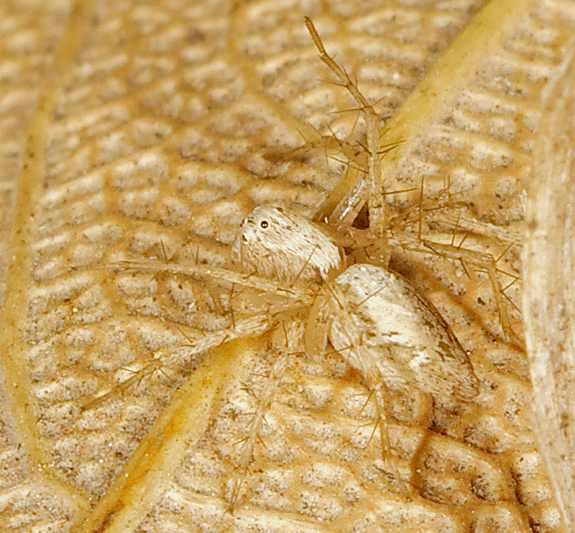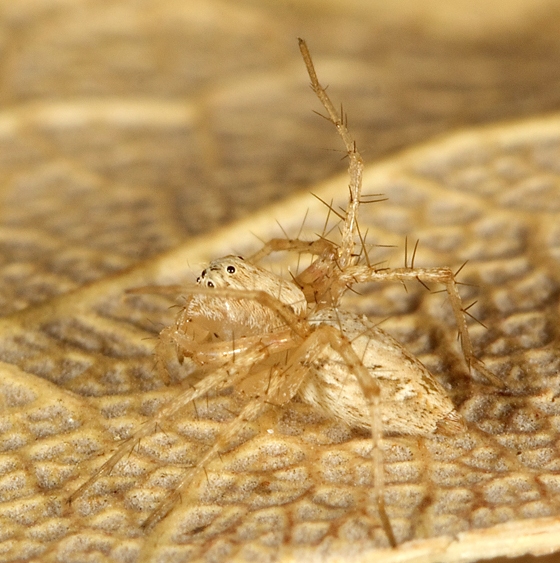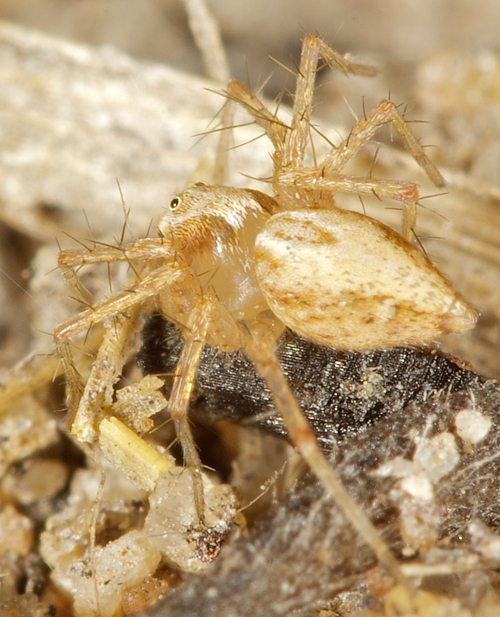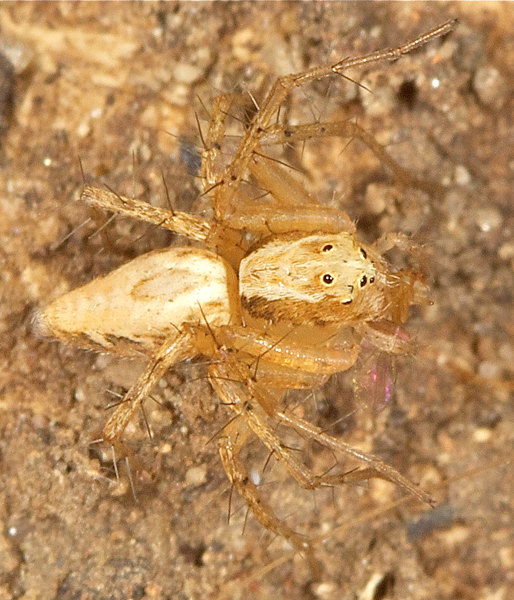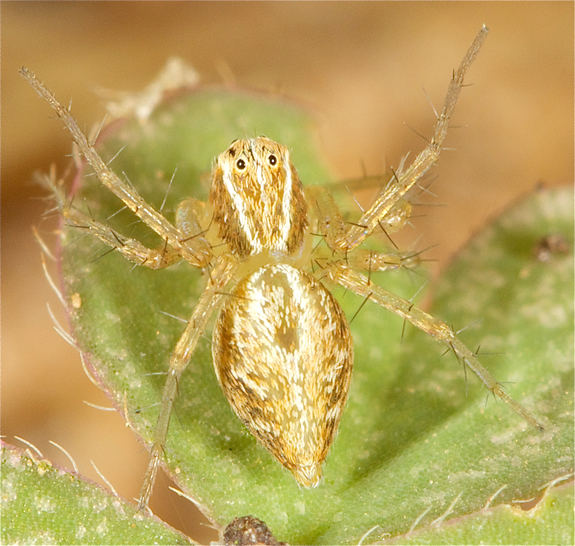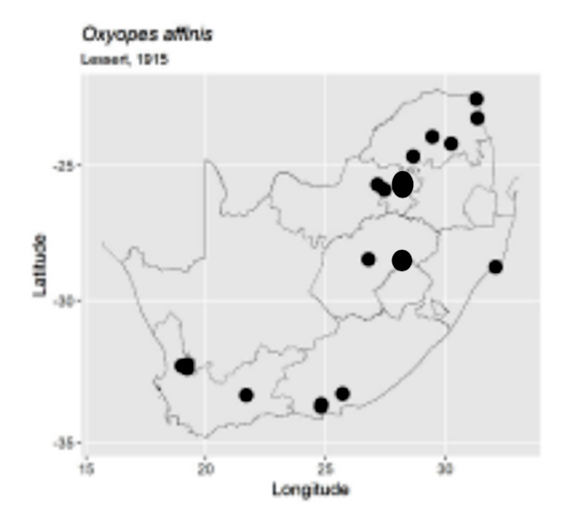Family: Oxyopidae
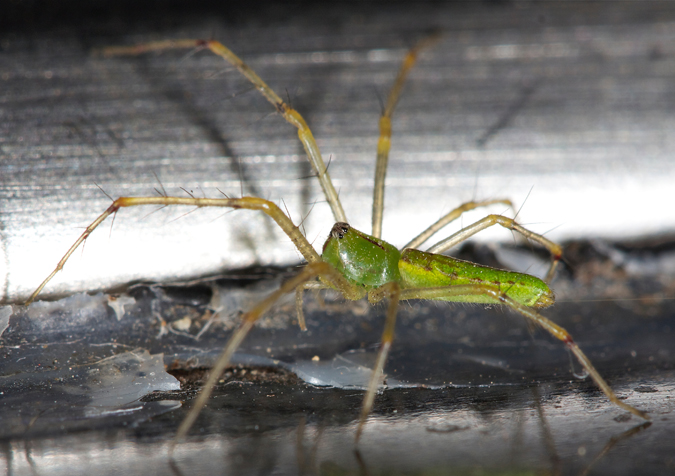
Kruger Nat’l Park by ExF
Description
Size: Female 16-25mm, Male 11-16mm
Carapace is green with ocular area darker. Four clypeal lines are present. Abdomen with light green mediolongitudinal area with chevron patterns, bordered by two white lines; cardiac mark is branched. The legs are exceptionally long bearing dark brown spines and numerous dark brown setae with large black basal spots.
The epigynum of the female has a pit wider than long, costae vertically opposite each other and the epigynum forming an elate expansion over the funnel-shaped copulatory ducts, with the sperrnathecal orifices directed mediolaterally. The tibia of the male palp is long with two tibial spines and a very short, broad tegular apophysis. The paracymbium has a very short sharp median projection and a sinuously curved, blunt tip.
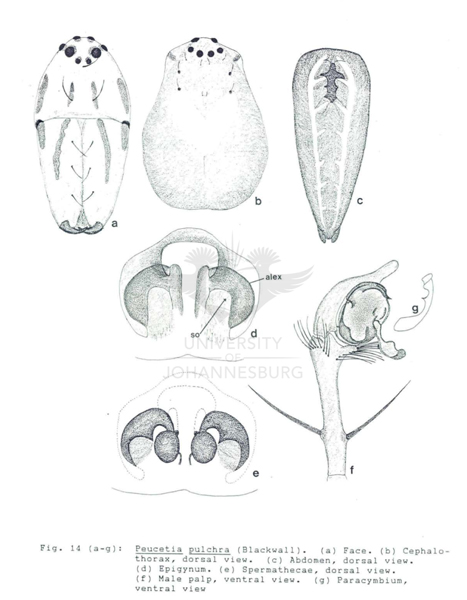
Distribution
South Africa, Namibia, Mozambique, Zaire, Tanzania, Seychelles, Zimbabwe, Zambia and Malawi
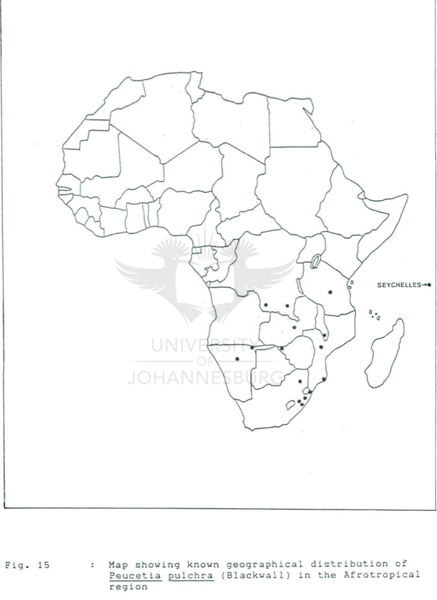
Distribution in South Africa: KwaZulu-Natal: Kosi Bay Nature Reserve (Manguzi Forest, 5 km NW Lake Nhlange); Kranzkloof; Manguzi; Mkuzi Game Re- serve; Pinetown, Kranskloof; Ntuli river hillside. Mpumalanga: Louw's Creek; Sabie (Klipbankspruit Plantation); Kruger National Park (Skukuza Camp).
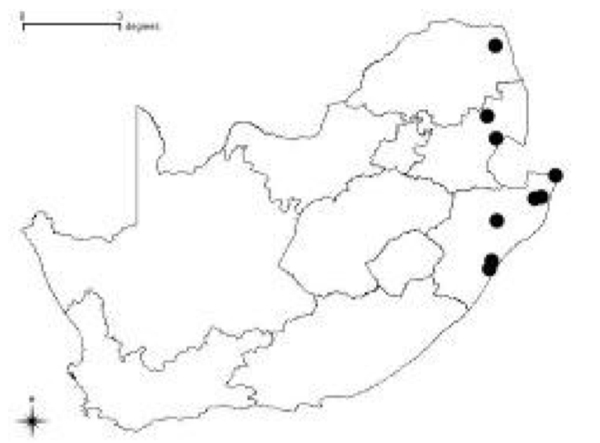
Life Style: wanderers (plant dwellers): free- running on the plants (mixed Acacia veld grasses and herbs)
(Further information on the Family Oxyopidae and Genus Peucetia can be found here: https://www.africawild-forum.com/viewto ... 30#p529926)
https://ujcontent.uj.ac.za/vital/access ...
https://www.google.com/books/edition/Fi ... frontcover
http://www.arc.agric.za/arc-ppri/Docume ... MICPHY.pdf



